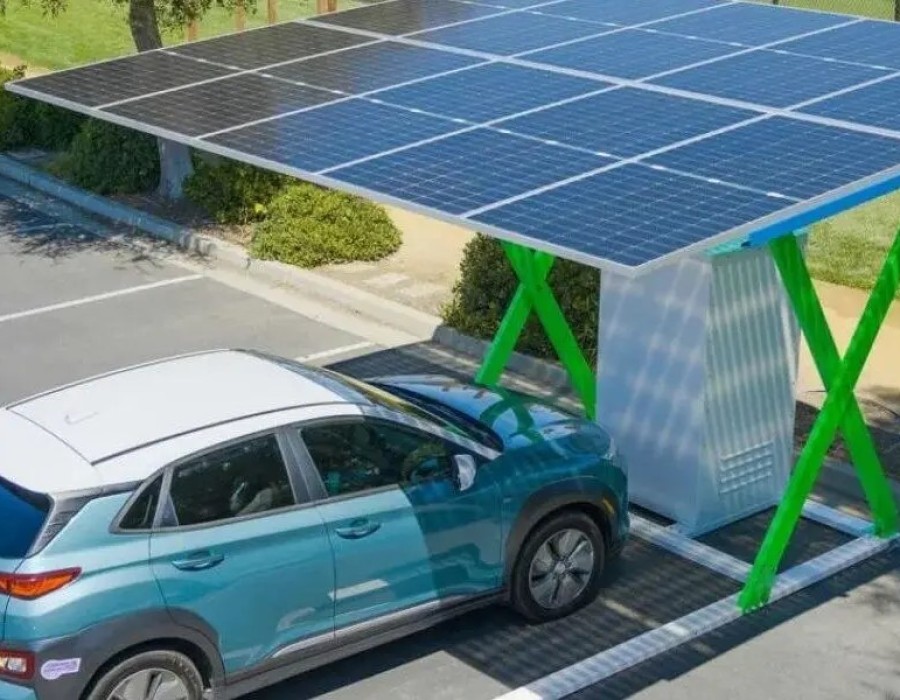Introduction
As a professional EV charger manufacturer in China, Topper Company delivers dependable electric vehicle charging stations and comprehensive solutions.
Driving an electric vehicle (EV) in the summer is perfectly safe—but when temperatures rise, many EV owners worry about how heat affects battery health.
Unlike internal combustion engines, which produce heat as part of their operation, EVs rely on lithium-ion batteries—efficient but sensitive to extreme temperatures. In hot weather, these batteries can lose efficiency, impacting driving range, charging speed, and long-term durability.
Consistent exposure to high temperatures may reduce a battery’s energy storage capacity, meaning your EV won’t hold a charge as well over time. While many modern EVs include thermal management systems to help prevent overheating, it’s still important to understand how to protect your EV during peak summer conditions.
The optimal temperature for an EV battery is typically between 20°C and 25°C (68°F to 77°F). Within this range, you’ll see peak driving range, faster charging, and longer battery life. But once temperatures reach 35°C (95°F) or higher, the risk of overheating increases. Although such heat is uncommon in some regions, others experience prolonged heatwaves, making smart EV charging strategies essential.
Here are five practical summer EV charging tips to help extend your battery’s lifespan, maintain range, and avoid unnecessary issues on the road.
EV Charging in Hot Summer Weather
1. Maintain a Mid-Range Charge (30–80%)
Charging your battery fully to 100% or letting it drop to zero regularly can accelerate degradation, especially in hot weather. Lithium-ion batteries perform best when kept between 30% and 80% charge during daily use. Partial charges generate less heat and reduce battery stress. Reserve full charges for long trips or when you need maximum range.
2. Limit Use of Rapid Chargers
DC fast chargers (superchargers) can charge your EV quickly—up to 80% in under 30 minutes—but generate more heat than slower chargers. This extra heat forces your battery cooling system to work harder and may speed up battery wear. Use fast charging sparingly, relying more on Level 2 chargers for everyday needs during hot months.
3. Charge at Night or in the Shade
Charging at night when temperatures are cooler helps reduce battery stress and grid demand. If nighttime charging isn’t an option, look for shaded or covered charging spots to avoid direct sun exposure, which can raise battery temperature by several degrees.
4. Use Level 1 or Level 2 Chargers for Overnight Charging
Slower charging with Level 1 (standard wall outlets) or Level 2 (240V home chargers) produces less heat and is gentler on your battery. Many EVs support scheduled charging to start during off-peak, cooler nighttime hours, helping preserve battery health and save on energy costs.
Keeping your EV plugged in overnight also allows thermal management systems to run without draining the battery.
5. Plan Your Routes and Charging Stops Ahead of Time
For summer road trips, map your route and identify charging stations in advance. Use apps like PlugShare, ChargePoint, or A Better Routeplanner to find compatible chargers, check availability, and select shaded or indoor locations when possible. Always carry your charging cable and adapters, especially if traveling through different regions.
Proper planning helps avoid range anxiety and ensures efficient charging, even in hot weather.
Bonus Tips: Protecting Your EV Battery in Summer
- Use Cabin Preconditioning: Cool your vehicle interior while plugged in before driving to reduce battery load.
- Limit Fast Acceleration: Smooth driving minimizes heat buildup in the battery.
- Monitor Battery Health: Use your EV’s app or dashboard to track battery temperature and condition, especially during heatwaves.
- Park Indoors or Use a Sunshade: Whenever possible, park in a garage or use reflective sunshades to lower interior and battery compartment temperatures.
Conclusion
Summer heat doesn’t have to be a threat to your EV. By adopting smart charging habits, avoiding charging under extreme heat, and planning ahead, you can protect your battery’s health, maintain driving range, and enjoy worry-free summer driving.
EV battery technology is improving rapidly, but until next-generation thermal management becomes widespread, being proactive remains the best way to protect your investment.
This summer, drive smart, charge wisely, and enjoy the ride—knowing your EV performs at its best even under the sun. Know more about Google SEO Directory





Comments